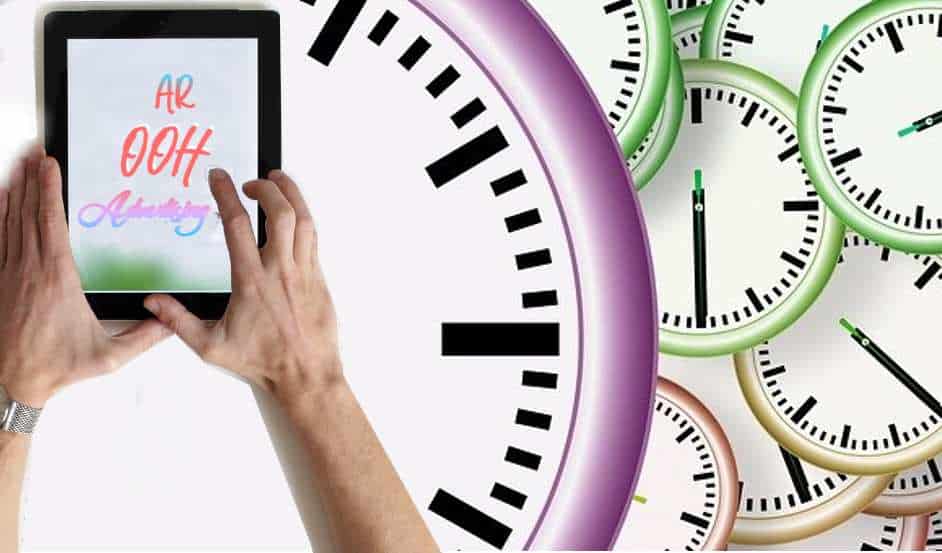The AR OOH Strategy That Changes How Consumers Touch and Engage
In the age of fleeting digital attention, the AR OOH (Augmented Reality Out-of-Home) experience is becoming a beacon of meaningful engagement. Yet not all AR OOH campaigns are created equal. What truly separates the scroll-stopping from the forgettable?
The answer lies in touch-triggered AR—immersive interactions embedded directly into in-hand media such as coffee sleeves, pizza boxes, or bar coasters. Rather than relying on massive screens or busy subway ads, marketers are now using OOH ads that feel personal, portable, and emotionally resonant.
This evolution is more than tech—it’s a behavioral shift. In this blog, we’ll explore how the AR OOH campaigns powered by tactile triggers like packaging, receipts, and takeout bags are delivering unmatched engagement in hyperlocal settings.
Why the AR OOH Needs Touch: Tactile + Tech = Lasting Memory
For decades, OOH advertising has relied on sheer visibility—big billboards, glowing kiosks, massive murals. But neuroscience shows visibility alone doesn’t ensure recall. Memory sticks better when the experience is:
Tactile
Emotionally grounded
Personally interactive
That’s where the AR OOH with tactile triggers outshines traditional OOH ads. Imagine scanning a QR code on a coffee sleeve and launching an AR scene where your espresso becomes a storytelling platform. Or tapping your phone against a pizza box to unlock a gamified experience that offers a reward.
This isn’t passive exposure—it’s active interaction, prompted by the one sense most forgotten in digital media: touch.
How the AR OOH Works in In-Hand Environments
Let’s break it down. Touch-triggered AR ads within in-hand media use:
QR codes or NFC chips embedded in everyday items (e.g., bar coasters, pharmacy bags, sanitizer kiosks).
Activation only when held, creating a natural behavioral bridge between physical use and digital immersion.
Context-specific content—location-based AR filters, product stories, health education, or coupon drops.
Example: Branded Coaster Campaign
A beer brand partners with local bars to distribute coasters embedded with QR codes. Once scanned, the coaster triggers an AR experience where the beer virtually pours into a branded glass, followed by an interactive trivia game. Prizes are redeemable in-store.
The outcome? Higher brand recall, longer dwell time, and increased foot traffic—all tracked with minimal intrusion.
The AR OOH Ads Work Best in Transitional Spaces
While billboard-based AR advertising fights for attention in crowded, distraction-heavy zones like subway platforms or highways, touch-triggered AR OOH ads thrive in “transitional spaces”—those quiet, in-between moments:
Cafés and breakrooms
Laundromats and salons
Clinic waiting areas
Grocery pickup zones
Here, the consumer is calm, seated, and naturally receptive. By placing AR ads in hand-held objects—such as placemat ads, food packaging, or pharmacy bags—brands embed their message in moments of mindfulness.
In these micro-moments, attention is earned—not forced.
Why Brands Are Choosing In-Hand AR OOH Over Screens
Measurable and Trackable
With QR or NFC triggers, brands can measure:
Dwell time
Activation rates
Location-specific conversions
Bounce vs. engagement depth
Unlike static OOH advertising, these AR ads generate data while maintaining real-world simplicity.
Brand Affinity Through Interactivity
Research shows that AR increases emotional engagement by 70%. When consumers touch, trigger, and explore a brand, trust builds organically.
Sustainable and Cost-Effective
In-hand AR placements don’t require physical real estate or maintenance-heavy displays. A pizza box or coffee cup becomes the billboard—and the portal—for branded AR storytelling.
The AR OOH + In-Hand Ad Formats That Work Best
Format | AR Use Case Example | Best Placement Area |
Pizza Box Ad | AR cooking show, trivia game, or promo reveal | Takeout restaurants, campuses |
Bar Coaster Ad | Branded filter game, scan-to-win beer stories | Bars, breweries, festivals |
Placemat Ad | Interactive health quiz or meal ingredient trace | Hospital cafeterias, cafés |
Coffee Sleeve Ad | AR mood check-in with brand integration | Office parks, cafés, bookstores |
Sanitizer Station Wrap | 3D hygiene education or insurance partner story | Clinics, gyms, grocery stores |
These media transform passive materials into interactive ambient advertisements, letting the consumer lead the journey.
Creative Ideas for Touch-Triggered AR Campaigns
Digital Treasure Hunts
Coffee sleeves across a city reveal different clues when scanned, unlocking exclusive experiences or prizes when all are found.
Doctor’s Office Wellness Map
Placemat ads in waiting rooms that scan into an AR health journey with animated tips and appointment booking buttons.
AR Loyalty Badges
Scannable bar coasters that reward return customers with virtual badges and hidden discounts.
Mood-Matched Beverage Pairings
A user taps their phone to a coaster, answers an AR mood quiz, and gets a suggested drink and playlist.
Avoiding the Pitfalls of Overdone AR Gimmicks
To truly succeed, the AR OOH campaign must:
Provide real value (education, entertainment, incentive)
Be seamless—requiring no app download
Fit the setting (don’t show loud visuals in quiet clinics)
Respect time (experiences under 30 seconds for casual users)
Brands that treat AR as a gimmick lose trust. Those who make it useful and delightful win engagement.
What’s Next for the AR OOH + In-Hand Ad Combo?
As spatial computing becomes more mainstream, in-hand AR ads will integrate with:
Wearables (smart glasses triggering ads based on what you’re holding)
Haptics (coasters that subtly vibrate on AR activation)
Dynamic scent releases (yes, that’s real)
For marketers, this means richer touchpoints and better conversion control—while maintaining hyperlocal relevance.
Final Take: The AR OOH Is Better When It’s Felt, Not Just Seen
In the world of OOH advertising, touch-triggered AR in in-hand media is the new frontier. It marries the credibility of the physical world with the excitement of immersive storytelling. And unlike passive screen-based AR ads, this strategy earns attention through relevance, tactility, and presence.
If your brand wants to:
Build trust
Engage locally
Deliver memorable, measurable campaigns
…then it’s time to look beyond static signs and screens.
It’s time to make your next AR OOH ad something people can hold—then unlock.






